Building 500/ Fitzsimons Building
Introduction
Text-to-speech Audio
Formally dedicated December 3, 1941, Building 500 also referred to as the Main Hospital Building and the Fitzsimons Building became the catalyst for modern medicine and surgery at Fitzsimons Army Medical Center. Building 500 was dedicated four days before Japan’s attack on Pearl Harbor, and its 608 beds in conjunction with Fitzsimons other medical services buildings gave the post a 2,252-bed capacity making the hospital the largest structure in Colorado and the largest Army general hospital in the country. The permanent hospital building expanded on Fitzsimons’ dedication to treating Tuberculosis and pioneered military medical practices through modern technology and professional education. Building 500 shifted away from the traditional Mission Revival architecture reflecting Art Deco and Art Moderne elements with the exterior built from “seven colors of brick, Colorado Yule marble, Texas sandstone, and green sand-rubbed stone panels."1
Images
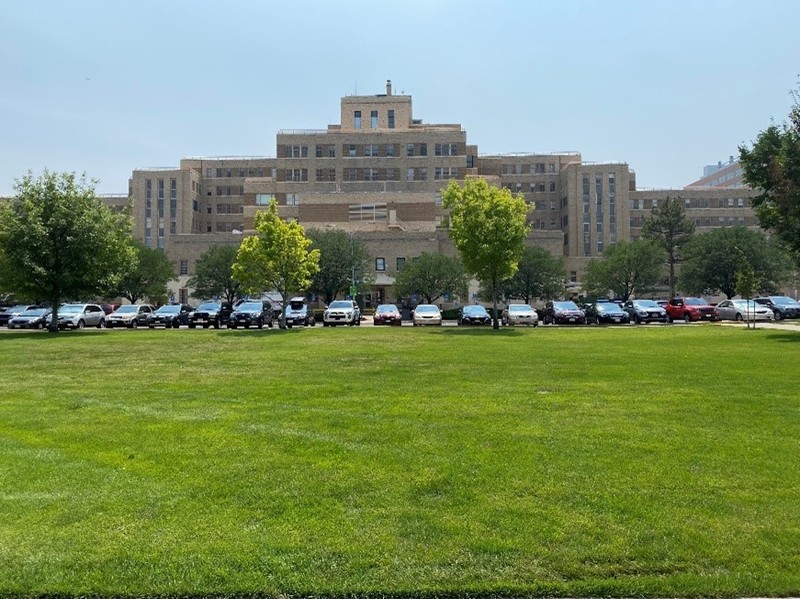
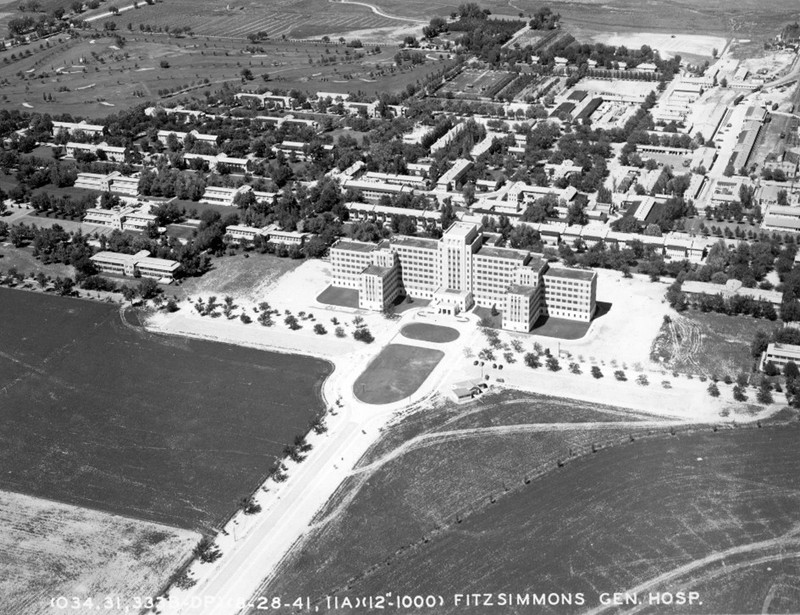
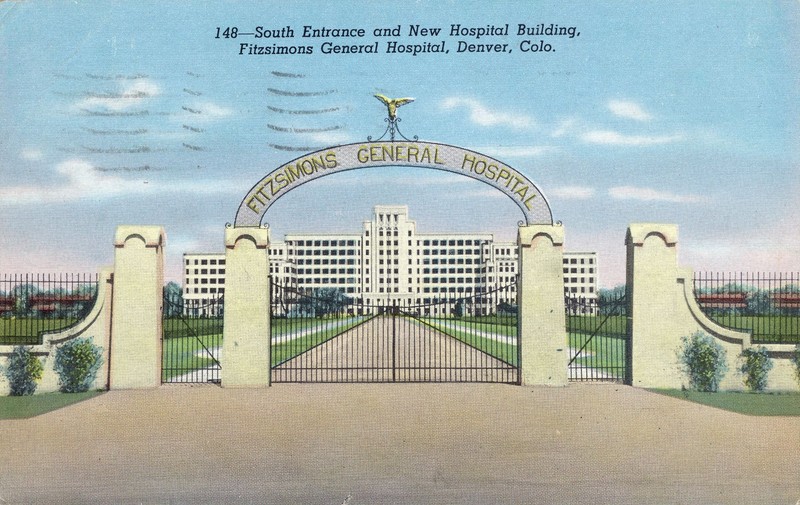
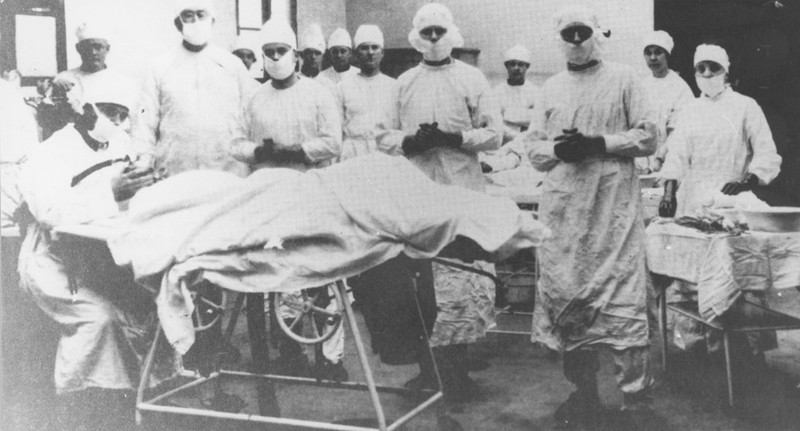
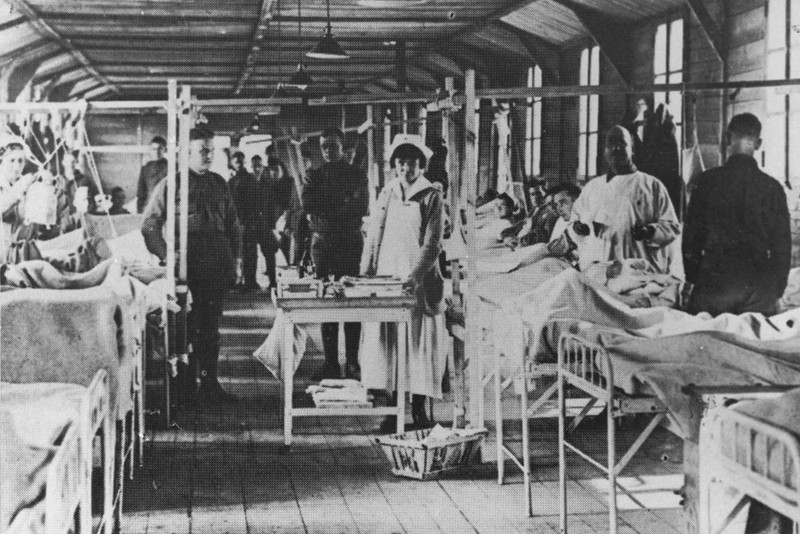
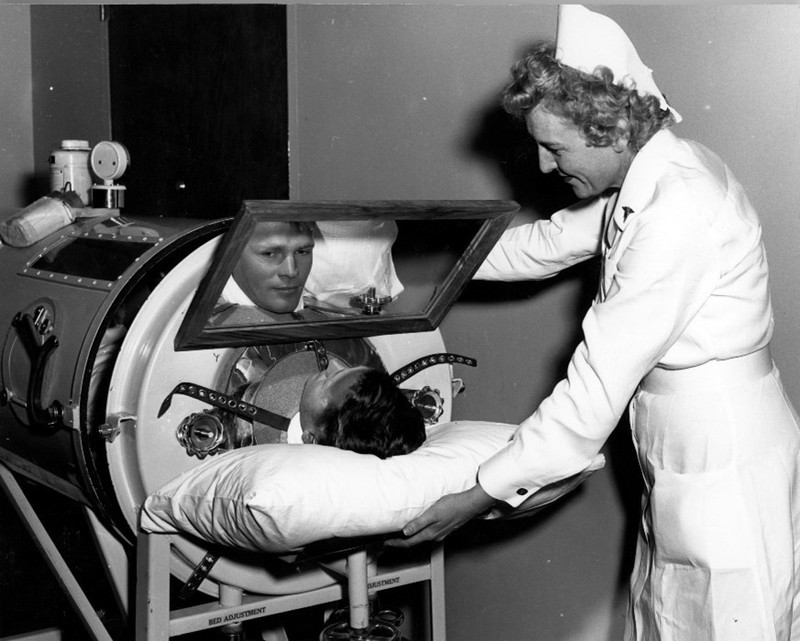
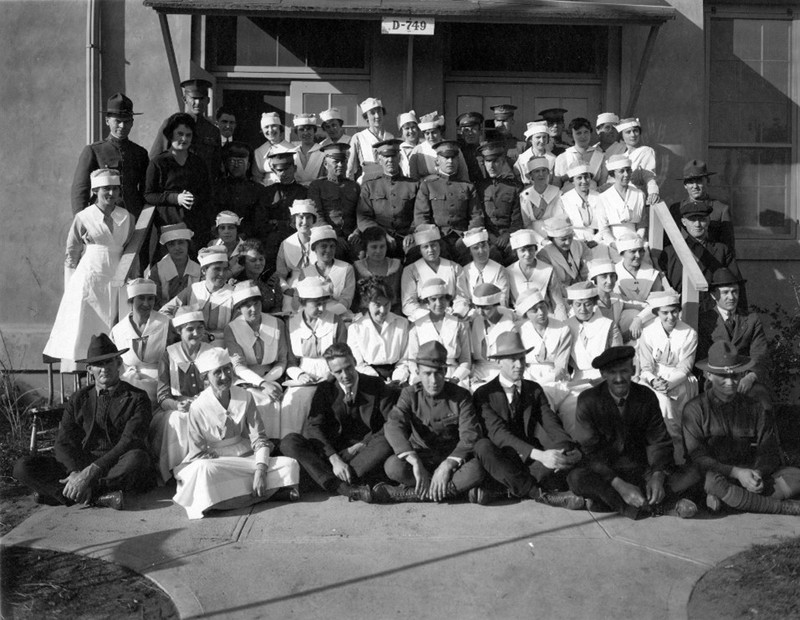
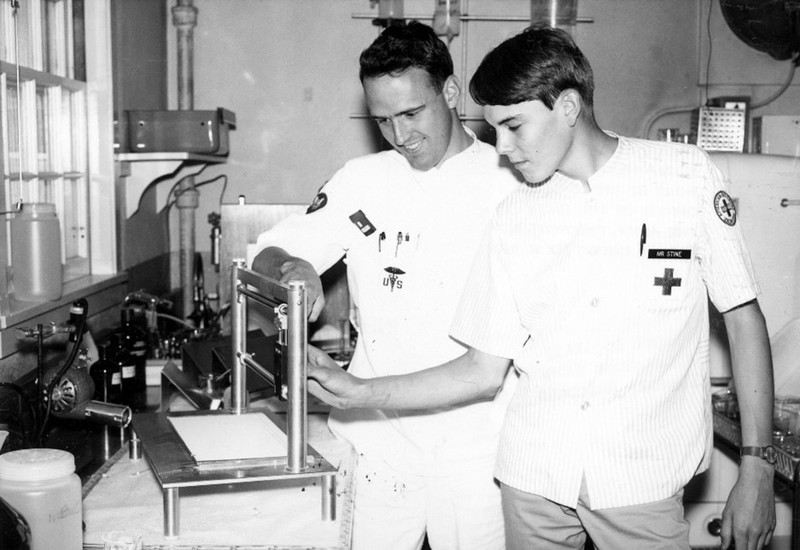
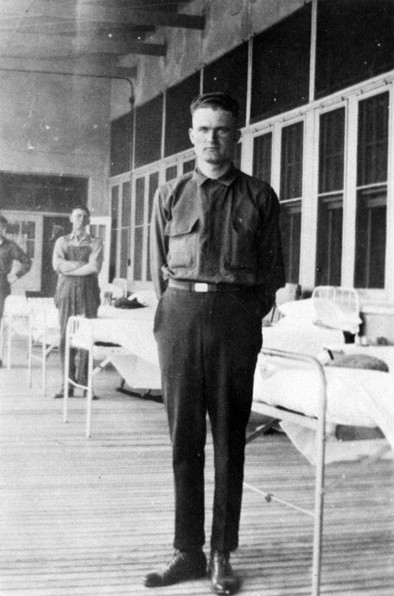
Stairwell inside Fitzsimons building (2021)
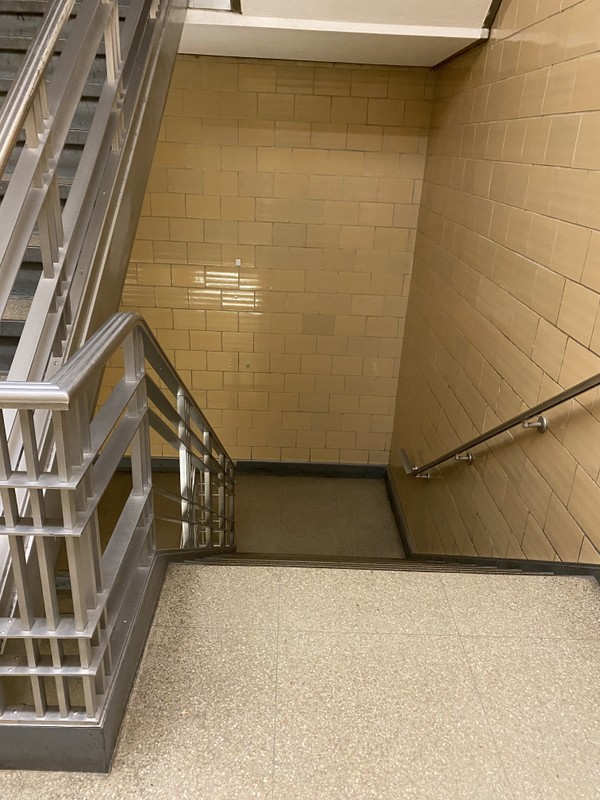
Second floor of Fitzsimons building (2021)
.jpg)
Second Floor of Fitzsimons building (2021)
.jpg)
Model of former Fitzsimons Army Medical Center (2021)
.jpg)
Backstory and Context
Text-to-speech Audio
The Main Hospital Building 500 ushered Fitzsimons Army Medical Center into a new era of medical service with the first patients admitted December 17, 1941 following the Japanese bombing of Pearl Harbor. With the capacity of patients reached, The Main Hospital began continuous expansion the following year December 1942 under the Commanding Officer O.H. Quade. Specialized treatment for tuberculosis continued in addition to broadened medical care including general medicine, surgery, and research cases. However, the rapid expansion effected the School for Medical Department Enlisted Technicians traditionally filled by enlisted men entering the specialized school for medicine, surgery, dental, laboratory, and X-ray. Enlisted men left the Fitzsimons technician’s school to return to active duty to treat on the battle fields, in station, or other general hospitals and civilians replaced their positions as medical technicians, clerks, cooks, and orderlies. 1942 marked the greatest year of growth for Fitzsimons and the Main Hospital which opened a second technician’s school in 59 temporary structures and graduated one thousand plus men each month. By 1949, the hospital included surgical and medical services of chest surgery, general surgery, women’s surgery, obstetrical and gynecological, orthopedic, urology, ear, nose and throat, and neuropsychiatric.
The department of surgery at the main hospital introduced open heart surgery July 1956 and by 1961 surgeons had performed 190 open heart procedures. Requiring five surgeons, four nurses, two anesthetists and one pump oxygenator operator, and supporting personnel, the surgery department treated its most prominent patient September 1955 President Dwight D. Eisenhower after he suffered a massive heart attack. President Eisenhower stayed on the eighth floor of the hospital for seven weeks which later became known as the Eisenhower suite.
During the Korean and Vietnam Wars, Fitzsimons Hospital experienced patient totals up to 2,500, and air evacuation of personnel wounded from Vietnam to Fitzsimons for specialized treatment proved significant. Sergeant Mark L. Brown of the 18th tactical fighter wing in PACAF (Pacific Airforce), 32nd tactical fighter squadron, headquarters 6217 combat specialty group, and 824 combat specialty group worked with the air evacuation in Saigon April 1975. Sergeant Brown was also a patient at Building 500 after sustaining an anterior cruciate ligament (ACL) tear during his service with air evacuation and recovered in the fifth-floor ward of the hospital with twenty plus other military personnel. After his knee surgery, Sergeant Brown worked at Headquarters AFAFC (Airforce Accounting and Finance Center) while receiving physical therapy in the basement of the hospital.
The Main Hospital continued to provide services for retirees until 1996 when Fitzsimons Army Medical Center was deactivated. The ten-story, brick and stone building still stands tucked against the modernity of Anschutz Medical Campus 25 years after its closing.
Cite This Entry
Williams, Scott and Natalie Brown on behalf of Aurora History Museum & Historic Sites. "Building 500/ Fitzsimons Building." Clio: Your Guide to History. November 15, 2021. Accessed March 14, 2025. https://theclio.com/entry/139803
Sources
- Historic American Buildings Survey, “Fitzsimons General Hospital, Main Hospital Building.” Historians Thomas H. Simmons and R. Laurie Simmons, Front Range Research Associates, Inc., Denver, Colorado, December 1998.
- “Colorado Welcomes You to Fitzsimons General Hospital Guide,” 1961.
- Stewart, John S. Fitzsimons General Hospital: The Story of a Great Institution, 1918-1938. Post No. 1 Veterans of Foreign Wars of the United States. 1938.
- Griffin, James E. Capt. Med. Adm. Corps. Fitzsimons General Hospital. Denver, CO. 1943.
- Fitzsimons Army Medical Center, “Fitzsimons Army Medical Center: The Life and History, 1918-1996. Aurora, CO: Fitzsimons Army Medical Center, 1996.
- Johnson, Elizabeth. “Historic Aurora Walking Tour: Fitzsimons Army Medical Center.” Aurora, CO: Aurora Historical Society, 1983
- Aurora History Museum image ii, iii, iv, v, vi, vii, viii
- Mark L. Brown, interview by Natalie Brown, July 23, 2021, Aurora History Museum.
Aurora History Museum
Aurora History Museum
Aurora History Museum
Aurora History Museum
Aurora History Museum
Aurora History Museum
Aurora History Museum
Aurora History Museum

